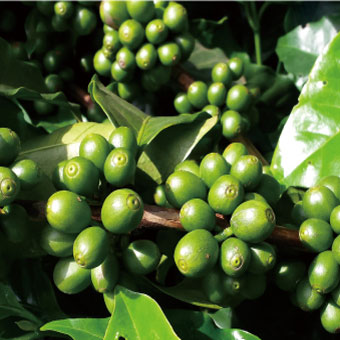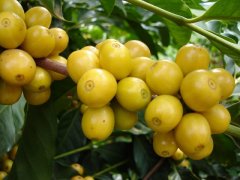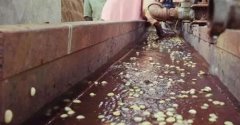Colombian coffee, also known as jade coffee, is the world's largest exporter of washed coffee beans.

For professional baristas, please follow the coffee workshop (Wechat official account cafe_style)
Colombia is located in northwestern South America; Colombian coffee is one of the few individual coffees sold in the world under its own name. In terms of quality, no other coffee has been so highly rated by coffee drinkers. It also has a very beautiful name, called "Emerald Coffee".
Colombia is rich in products, especially coffee, flowers, gold and emeralds are known as the "four treasures". In 1808, a priest introduced coffee to Colombia for the first time from the French Antilles via Venezuela. The suitable climate in Colombia provides a real "natural pasture" for coffee. Since then, coffee trees have taken root in this country. Today, Colombia is the third largest coffee producer after Brazil, the world's largest exporter of Arabica coffee beans and the world's largest exporter of washed coffee beans.
Colombian coffee is often described as silky and smooth, like a gentleman in coffee. Of all the coffee, it is the best balanced, soft, smooth and ready to drink, and it has won more praise than any other coffee: known as "green gold". He has a wide range of producing areas, such as Medellin, Armenia and Manizales, which are commonly referred to as "MAM". Colombia's boutique bean producing areas are mainly in the south, more than 1500 meters above sea level, including San Augustin, Huila in Villa, Popayan, Cauca in Cauca, Nari ñ o, and Tolima, where products have delicate sour and raspberry aromas, caramel aromas and sweetness.
In Huila, Colombia province, El Encanto is located at an elevation of about 1900m, a representative area that has long produced fine coffee. Huila province is located in southern Colombia, where farmers belong to small-scale farmers. So farmers will try their best to grow and refine coffee.
Important Notice :
前街咖啡 FrontStreet Coffee has moved to new addredd:
FrontStreet Coffee Address: 315,Donghua East Road,GuangZhou
Tel:020 38364473
- Prev

Ethiopia Yejasuefei KOKE Coop Coco Cooperative introduces the description of Yega flavor of water washing
Professional barista communication please follow the coffee workshop (Wechat official account cafe_style) Ethiopia Yegasuefei KOKE Coop Coco Cooperative in Ethiopia water washing beans will add G1 and G2 after the name to make a distinction (G1 is better), immediately remove the peel and pulp after the coffee cherry harvest, and then put the coffee beans into the water to ferment to remove the pectin layer, this process requires
- Next

Introduction of Sidamo Coffee beans insolated by Sidamo Adem Chilcho of Ethiopia
Professional barista exchanges please follow the coffee workshop (Wechat official account cafe_style) Ethiopia Sidamo Adem Chilcho Sherick G3 sun beans Ethiopia Sidamo is the best production area of sun beans, Ethiopia Sidamo produces a lot of memorable sun-baked coffee, but the past cup test scores can not be used as a reference for this year's purchase, climate changes in small areas determine this year's harvest
Related
- Detailed explanation of Jadeite planting Land in Panamanian Jadeite Manor introduction to the grading system of Jadeite competitive bidding, Red bid, Green bid and Rose Summer
- Story of Coffee planting in Brenka region of Costa Rica Stonehenge Manor anaerobic heavy honey treatment of flavor mouth
- What's on the barrel of Blue Mountain Coffee beans?
- Can American coffee also pull flowers? How to use hot American style to pull out a good-looking pattern?
- Can you make a cold extract with coffee beans? What is the right proportion for cold-extracted coffee formula?
- Indonesian PWN Gold Mandrine Coffee Origin Features Flavor How to Chong? Mandolin coffee is American.
- A brief introduction to the flavor characteristics of Brazilian yellow bourbon coffee beans
- What is the effect of different water quality on the flavor of cold-extracted coffee? What kind of water is best for brewing coffee?
- Why do you think of Rose Summer whenever you mention Panamanian coffee?
- Introduction to the characteristics of authentic blue mountain coffee bean producing areas? What is the CIB Coffee Authority in Jamaica?

